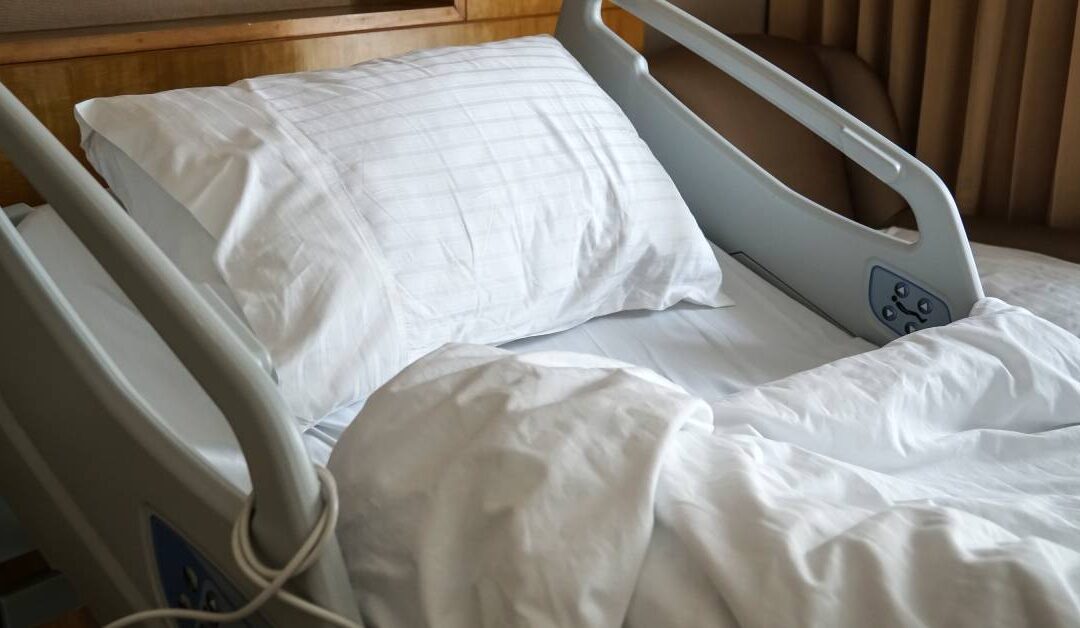For older adults, maintaining safety and comfort at bedtime can sometimes require extra support. Bed rails, which are designed to provide stability and prevent falls, are a common solution in homes and care facilities. Explore the benefits and risks of bed rails for older adults to learn how to use this equipment effectively.
Enhanced Safety
One of the primary ways that bed rails enhance safety is by preventing accidental falls. Older adults often face balance challenges and mobility limitations, making nighttime falls from bed a significant concern. Bed rails act as a physical barrier that can reduce the likelihood of rolling out during sleep, providing peace of mind for both individuals and their caregivers, especially in care settings or at home where supervision might not be constant.
Additionally, these rails serve as a preventative measure for those who may move frequently. Bed rails can help protect individuals who are unaware of their surroundings at night, creating a physical barrier that prevents accidental wandering.
Improved Mobility Support
One of the biggest reasons new and used hospital beds have bed rails is because they’re versatile mobility aids. They provide individuals with a sturdy handhold to support movements, whether they’re transitioning from lying down to sitting up or getting in and out of bed. For older adults who face challenges with balance or strength, this added stability can help preserve independence.
Reliable support can decrease the need for constant caregiver assistance, offering both physical and emotional benefits for users. When the individual using the bed rail knows they have something stable to rely on, they can feel encouraged to move safely, which reduces their reliance on caregivers.

Increased Sense of Security
For many older adults, bed rails offer a sense of security that can significantly improve their sleep quality. Knowing they are protected from falls or other risks while resting can reduce their anxiety, which in turn can lead to more uninterrupted and restful nights.
This sense of security can also extend to caregivers and family members. When caregivers feel confident that their loved ones or clients are safe in bed, they may experience less worry.
Independence for Caregivers and Users
Another advantage of bed rails is the independence they provide, both for users and their caregivers. With the right bed rails, older adults may be able to perform movements like turning over or sitting up without external help. This leads to a greater sense of autonomy and self-reliance, overall improving their confidence.
For caregivers, bed rails can reduce their physical burden and repetitive tasks, such as aiding every movement into or out of bed. This caregiving support improves the allocation of caregiving resources and may even help prevent burnout.
Aid for Repositioning
Bed rails provide sturdy physical support, allowing older adults to stabilize themselves when shifting positions in bed. This makes it easier and safer for them to adjust their posture, reducing strain and discomfort. Caregivers also benefit, as the rails help them assist with repositioning more effectively, minimizing the risk of injury for both parties.
Bed rails can help older adults get into the following positions more smoothly:
- Sitting upright: This position aids in eating meals, reading, or engaging in activities. It may also improve breathing and digestion.
- Side-lying: Lying on the side can help prevent pressure sores and improve circulation by redistributing body weight.
- Semi-reclined: A partially reclined position offers back support and comfort, making it ideal for relaxation and alleviating acid reflux.
- Legs raised: Elevating the legs can reduce swelling and improve blood flow, especially for individuals with circulation issues.
- Sloping to the edge of the bed: This position makes transferring in and out of bed easier and safer, minimizing the risk of falls.
This assistance can be particularly beneficial for individuals with conditions such as arthritis or diminished muscle strength. Regularly changing body positions also reduces the risks of pressure ulcers, making bed rails a practical addition for long-term comfort.

Possible Risks
While bed rails offer numerous benefits for older adults, improper installation or use can create certain risks. Ensuring that bed rails are securely installed and used according to manufacturer guidelines is crucial to avoiding these dangers.
Risk of Entrapment
Improperly installed rails may pose a risk of entrapment. Some individuals—especially those with lower mobility—may accidentally get trapped between the mattress and the rail, leading to serious injuries or even suffocation in rare cases.
To mitigate the risk of entrapment, the bed rails must be securely attached to the bed frame as per the manufacturer’s instructions. Regularly inspect the rails for any loose parts and choose a size and type that fits the bed properly to prevent gaps. The mattress should fit snugly against the bed frame and rails without leaving any gaps.
Feeling of Confinement
Some individuals may feel confined or restricted by bed rails. Feelings of frustration or agitation can arise, potentially leading to resistance or attempts to bypass the rails.
To minimize feelings of confinement, involve the individual in discussions about the use of bed rails and consider their preferences. Opt for adjustable or removable rails that can be positioned in a way that feels less restrictive while still providing the necessary safeguards. Offer clear explanations and reassurance about the purpose of the rails.
Climbing Risks
Unfortunately, some individuals may try to climb over the bed rails, which can be dangerous. These attempts could result in more severe injuries than a standard fall from bed. Individuals with cognitive impairments or those prone to restlessness are particularly at risk.
Caregivers can take the following steps to minimize this risk:
- Consult a healthcare professional to learn about other safety options.
- Lower the bed height as much as possible.
- Use a mattress with raised edges to help reduce the chance of rolling out of bed.
- Consider alternative safety measures, like foam wedges or bed trapeze, instead of bed rails when appropriate.
- Ensure the bed rails are properly installed and securely fitted to the bed to prevent gaps or movement.
- Monitor the individual closely to promptly address signs of distress or unsafe behavior.
Bed rails offer enhanced safety and mobility support, which can help users and caregivers feel more at ease. Before using bed rails, consider the individual’s healthcare needs. Caregivers can minimize the risks of using bed rails by consulting the user’s healthcare provider and following the manufacturer’s use instructions. Communicating clearly, tailoring the use of the bed rails, and monitoring the individual while they are in bed increases the safety and efficacy of bed rails.


Recent Comments